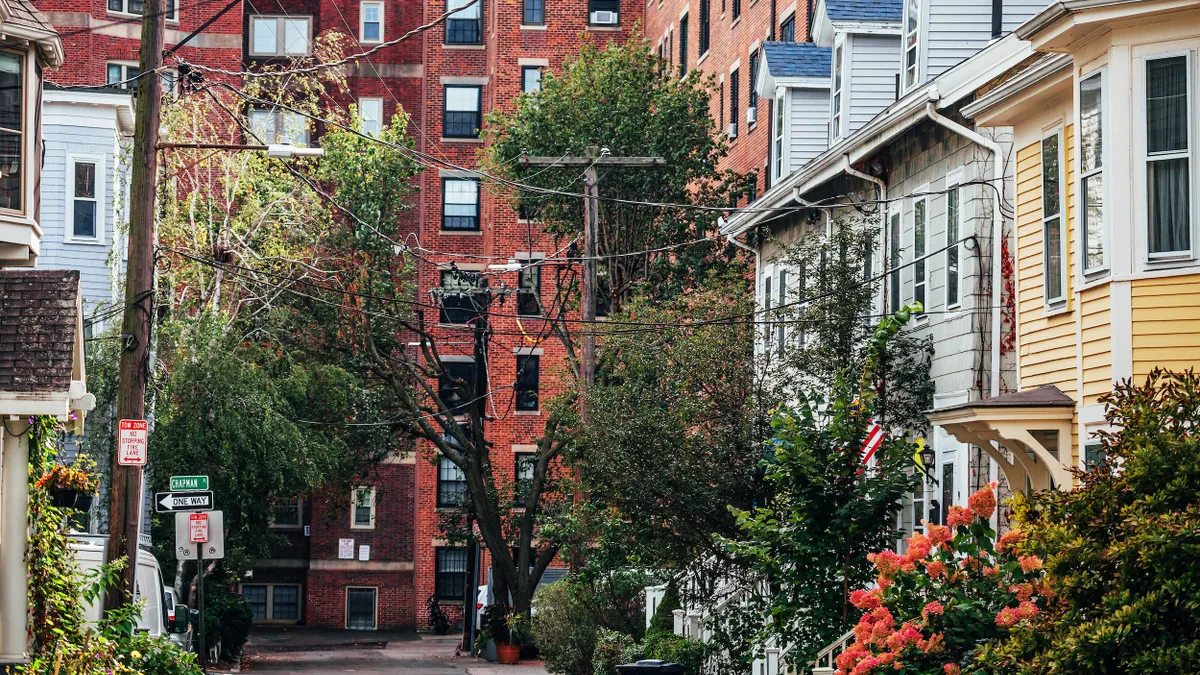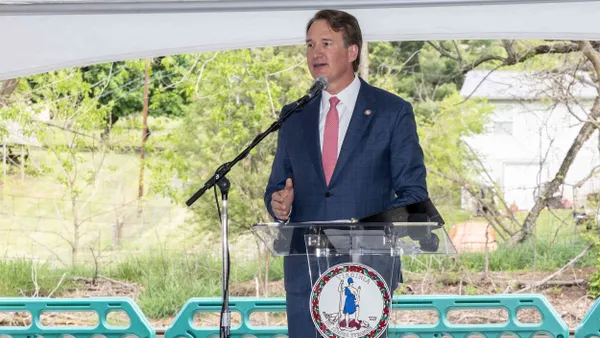Dive Brief:
-
The Minneapolis City Council's transportation and public works committee presented a draft of the Minneapolis Transportation Action Plan this week, designed to get more people out of their cars and using alternative transportation modes by 2030.
-
Currently, 43% of residents travel alone in cars; 15% travel by walking and 13% take public transit. The plan aims to have 20% of residents alone in cars alone; 25% of residents travel by walking and 25% by public transit by 2030. The overall plan sets a goal for three out of five resident trips taken by bike, foot or transit.
-
To help reduce the number of people traveling by car, Minneapolis intends to expand high frequency transit to be within a 5-minute walk of 75% of residents, and a 10-minute walk for 90%. The city will accept public comments on the plan until April 22.
Dive Insight:
The 252-page draft plan is guided by six general transportation goals: climate, safety, equity, prosperity, mobility and active partnerships.
The plan’s framework is shaped in part by the city's 2040 Climate Action Plan. "On-road transportation" emissions are responsible for 24% of Minneapolis’ greenhouse gas (GHG) emissions. The city will need to cut back on automobile passenger miles by 38% to hit its ambitious goal of reducing GHG 80% by 2050.
The report calls out specific actions to reach those goals, which include more green infrastructure and trees in street projects; using paint and low-cost infrastructure improvements for quick street improvements; increasing the "all ages and ability network twofold" with a protected bike and micromobility network; and adopting a complete streets and curbside management policy.
The plan also calls for adding mobility hubs, which were first launched throughout the city in 2019 as a place for residents to access different mobility options, particularly for first mile/last mile solutions. The hubs, which are funded in part by the city and a grant from the Bloomberg Philanthropies' American Cities Climate Challenge, incorporate little-to-no car use and include features like a bus stop, bench, scooter and bike-share parking and signage.
The concept of mobility hubs are still fairly new in the U.S., but gaining steam as cities work to encourage more low-carbon or no-carbon transportation options.
Minneapolis' transportation plan includes specific goals for the hubs, such as working with public-private partners to evaluate future hub locations and collaborating on a virtual platform to access and pay for transit, including a multimodal subscription package.
The draft also details plans to require private mobility providers to share trip and vehicle data. That information can support decisions around infrastructure, safety and policy, according to the report.












